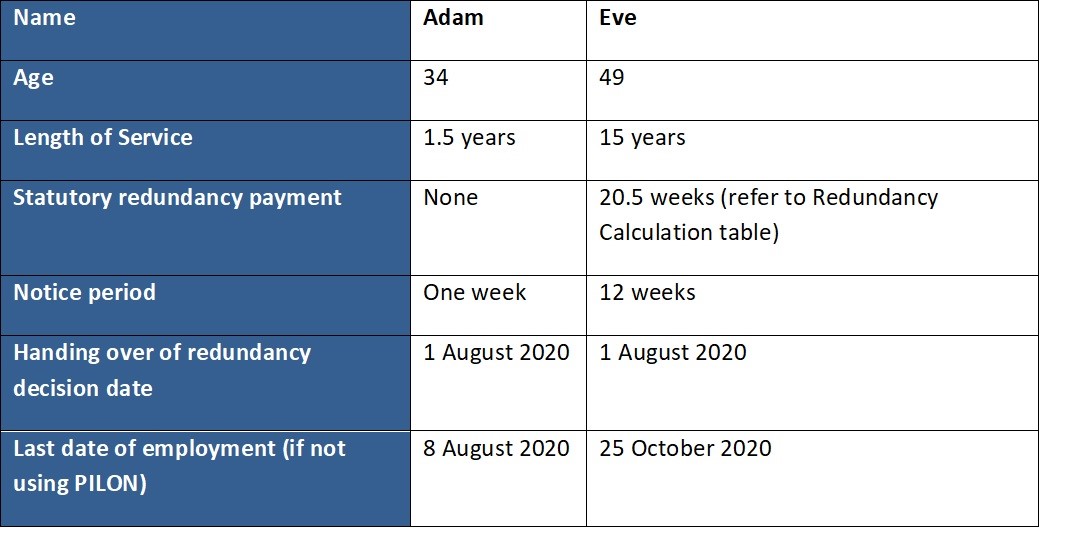Discussed: If a Company Goes Bust Who Pays Redundancy in the UK?
Discussed: If a Company Goes Bust Who Pays Redundancy in the UK?
Blog Article
Checking Out the Operational Characteristics of Business Redundancy and Its Long-Term Sustainability

Redundancy Strategies for Service Connection
In order to ensure nonstop procedures, companies must apply effective redundancy approaches for service continuity. Redundancy in this context describes the duplication of essential components or features within a system to alleviate the impact of potential failures. By including redundancy approaches, organizations can boost their resilience versus disturbances caused by various aspects such as all-natural calamities, devices failings, or cyber-attacks.
One usual redundancy approach is the implementation of back-up systems and information storage options. This includes developing duplicates of important data and systems that can be activated in situation of a key system failing. Furthermore, companies can establish repetitive interaction channels and power resources to keep connectivity and procedures throughout unforeseen events.
Furthermore, cross-training workers to perform several functions within the business can act as an important redundancy approach. This ensures that essential jobs can still be executed even if key workers are unavailable because of disease or other reasons. Overall, effective redundancy strategies are essential for businesses to maintain functional continuity and decrease the influence of prospective disruptions.
Influence of Redundancy on Organizational Strength
Offered the vital role redundancy strategies play in ensuring business continuity, exploring the influence of redundancy on business durability comes to be essential for comprehending the alternative operational dynamics of a company. Redundancy, when tactically executed, can dramatically add to improving an organization's resilience in the face of unanticipated obstacles.
Additionally, redundancy can reinforce worker morale and confidence, knowing that there are backup plans in position to deal with unanticipated situations. This complacency can cause increased productivity and an extra favorable workplace. Additionally, redundancy can foster innovation and imagination within an organization as employees feel equipped to take calculated threats, understanding that there is a safeguard to support them in instance of failure. Generally, the impact of redundancy on organizational durability is extensive, shaping the long-lasting sustainability and success of a firm.
Stabilizing Efficiency and Flexibility in Redundancy
Attaining an unified stability in between functional performance and flexible adaptability is a pivotal obstacle in the strategic release of redundancy within companies. Efficient operations are necessary for maintaining efficiency and cost-effectiveness, making certain that resources are utilized ideally. However, excessive emphasis on effectiveness alone can bring about strength, making it hard for organizations to adapt to unanticipated modifications or challenges. On the various other hand, versatility enables organizations to react nimbly to evolving situations, promoting development and resilience. Yet, as well much versatility without a strong functional structure can lead to inadequacies and disparity.
To balance performance and flexibility in redundancy preparation, companies should very carefully analyze their functional requirements, market dynamics, and strategic goals. Executing lean practices can improve efficiency by improving procedures and eliminating waste, while fostering visit their website a culture of flexibility and continuous renovation can boost flexibility. Additionally, investing in cross-training programs and durable interaction networks can aid grow a flexible labor force capable of taking care of diverse tasks throughout periods of transition. Inevitably, discovering the best balance in between effectiveness and versatility is essential for constructing a lasting and resilient company when faced with uncertainty.
Long-Term Sustainability Through Redundancy Planning
To make certain enduring stability and stability, organizations need to purposefully straighten their redundancy preparation with lasting sustainability goals, thus balancing operational effectiveness with adaptive flexibility. Long-term sustainability with redundancy planning includes greater than just short-term cost-cutting procedures. It calls for a comprehensive strategic method that expects future challenges and possibilities. Companies should see redundancy not as a responsive solution to immediate issues however as a positive technique for long-lasting you could check here success. By incorporating redundancy preparation with sustainability purposes, organizations can develop a durable structure that can withstand various market fluctuations and interior adjustments.

Positive Measures for Sustainable Company Workflow
How can firms proactively boost their operational sustainability for lasting success? Implementing aggressive actions is crucial for firms intending to make sure lasting operations. One crucial approach is to spend in technology and advancement to simplify procedures, reduce waste, and stay competitive out there. Taking on lasting practices such as lowering energy consumption, minimizing carbon footprint, and optimizing resource use can not just profit the setting however also lead to cost financial savings in the long run.
In addition, promoting a society of constant renovation and understanding within the organization can improve versatility to changing market problems and client needs. Urging staff member participation in my response decision-making processes and supplying possibilities for specialist development can increase morale, performance, and general efficiency. Developing clear objectives, keeping an eye on essential efficiency indicators, and routinely evaluating progress are crucial elements of aggressive sustainability monitoring.
Collaborating with suppliers, customers, and other stakeholders to advertise lasting practices throughout the supply chain can develop a causal sequence of positive impact - redundancy pay if company goes bust. By taking aggressive actions towards functional sustainability, companies can develop resilience, drive development, and secure their lasting success in an ever-evolving organization landscape
Verdict

In the world of business monitoring, the strategic implementation of firm redundancy stands as an essential yet intricate method that necessitates a fragile balance between operational efficiency and lasting stability. By dissecting the operational characteristics that underpin business redundancy and reviewing its more comprehensive implications for business resilience and adaptability, a nuanced understanding of exactly how redundancy techniques can form the future trajectory of a company begins to unfold.Provided the critical duty redundancy strategies play in making certain service connection, checking out the impact of redundancy on organizational durability comes to be essential for comprehending the holistic operational dynamics of a business. In general, the effect of redundancy on business durability is profound, forming the lasting sustainability and success of a business.
In verdict, comprehending the functional characteristics of business redundancy is vital for making sure lasting sustainability.
Report this page